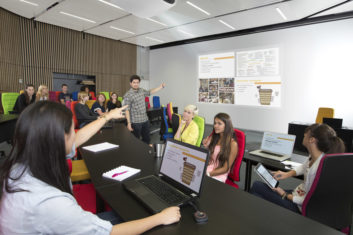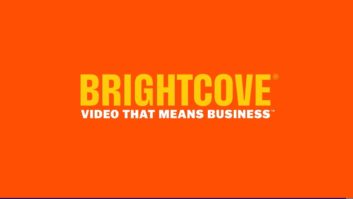A report on the state of video in education has revealed that 75% of educators view video as more effective than text-based content, with 86% of educators wanting their institutions to integrate more video, and 94% agreeing that video directly contributes to improvements in student performance.
The State of Video in Education 2022 report, published by Kaltura, the Video Experience Cloud, also confirms that hybrid learning will remain, with 98% of institutions having students taking at least one hybrid course this academic year, and with 58% responding that over half the student body will have at least one course that is both in-class and online.
 Kaltura’s eighth annual report on video in education surveyed 683 respondents, assessing the growth and evolution of video’s impact on education over the past year and provided insights into the coming year. The survey was conducted in September 2021 with 683 respondents who work in educational institutions in the US, Canada, UK, Germany, Italy, Sweden, The Netherlands, Spain, Singapore, and Australia. These institutions have student populations that range from 500 to more than 20,000. Respondents included professors, lecturers, teachers, instructional designers, technology officers, administrators, and admissions officers across higher education and K-12.
Kaltura’s eighth annual report on video in education surveyed 683 respondents, assessing the growth and evolution of video’s impact on education over the past year and provided insights into the coming year. The survey was conducted in September 2021 with 683 respondents who work in educational institutions in the US, Canada, UK, Germany, Italy, Sweden, The Netherlands, Spain, Singapore, and Australia. These institutions have student populations that range from 500 to more than 20,000. Respondents included professors, lecturers, teachers, instructional designers, technology officers, administrators, and admissions officers across higher education and K-12.
As the use of video in education has grown greatly over the past two years, the study’s goal was to provide answers to pressing questions facing educators about the long term value of video in education, namely, what are the benefits of using video for learning beyond the pandemic and how is video transforming education over the long term?
Despite returning to in-person learning, many institutions successfully implemented hybrid solutions that support their pedagogical strategies. This has largely to do with increased student engagement rates and improved academic outcomes. 97% of educational professionals say that video is essential to students’ academic experiences and success, and 94% of educators agree that video increases student satisfaction and directly contributes to an improvement in student performance.
“The shift within educational institutions over the course of the COVID-19 pandemic has been foundational,” said Dr. Michal Tsur, Kaltura co-founder and president. “Virtual classrooms, interactive video, and online learning have not only become mainstream but are in fact, now the preferred teaching tools for the majority of educators. While video has become a critical learning tool, we see also video penetrating many other areas on campus, including for student and alumni engagement, community activities, and particularly, for virtual events.”
Key findings in the report include:
· Hybrid Learning Will Remain: 98% of institutions have students taking at least one hybrid course this academic year, with 58% responding that over half the student body will have at least one course that is both in-class and online.
· Remote on the Rise: 95% of schools will have some students that are receiving a fully remote education.
· Video is in Demand: 86% of educators would like to see their institution integrate more video.
· Beyond Teaching: Video is being widely used as a communication and collaboration tool for educators to share ideas, with a 241% increase in video conferencing between faculty and staff.
· Faculty are seeing the rewards: The top benefit of integrating video outside of the classroom last year was that it increased professional development and training opportunities for educators, according to 58% of staff surveyed.
The full report can be found here.







